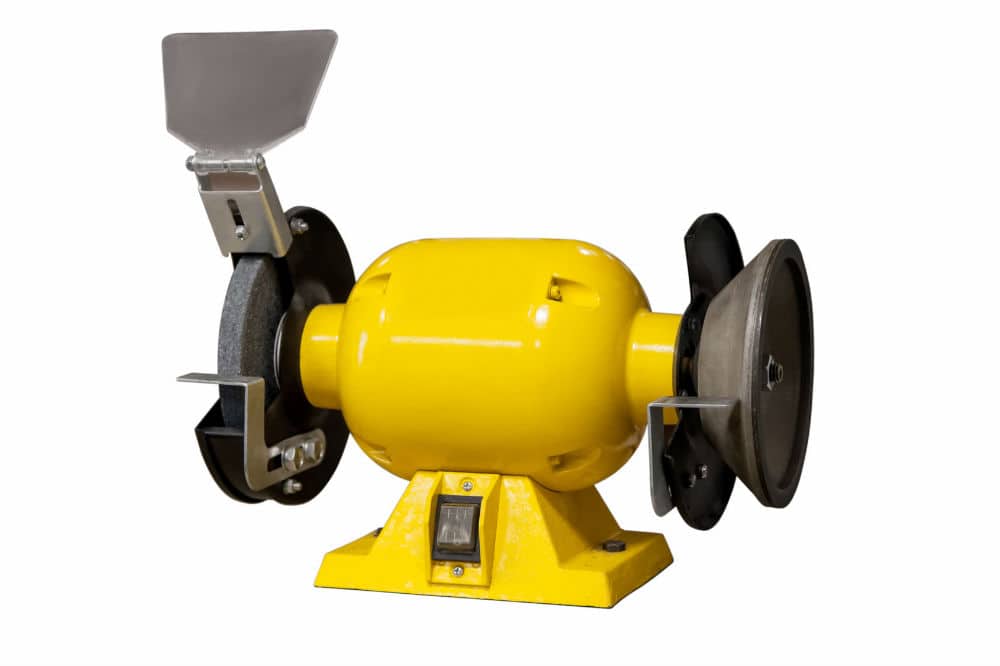Let’s say you’re a woodworking DIY enthusiast, which is probably likely, as you wouldn’t be reading this article otherwise. You’re then presented with two different bench grinders. Maybe you’re trying to decide which one to buy, or your spouse is letting you choose so they can get it for you as a gift. How do you make a proper choice? How does a proper bench grinder comparison go?
It’s simplistic to just base the decision on the price. If you’re buying for yourself, you may be tempted to just get the cheaper one so you can save money on the belief that these things are basically all the same anyway. If you’re getting one as a gift, you may wish for the more expensive one because you think pricier is better.
While price does count as a factor, it’s not the most important consideration. It’s all about getting things done while you remain safe. It’s about minimizing the frustrating problems so that you enjoy the whole woodworking process, which is actually the point of having this hobby (or any hobby for that matter) in the first place!
With that in mind, let’s list down all the more crucial factors that must be considered first:
Motor Capacity: How to Make a Bench Grinder Comparison
The motor is what enables your bench grinder to do its work, so obviously you need a capable motor. Saving your money by buying a cheap model with an inadequate motor simply leaves you with a machine that can’t do the job it’s supposed to.
So here you need to check out the speed of the motor and the RPMs it’s able to offer. Motors are categorized by horsepower and, at the very least, you need one with 0.5 HP. A 0.75 is available, but for some tough jobs you may need to get a 1-HP motor. It all depends on what kind of jobs you’re planning for your bench grinder. As for RPM, just make sure that the motor is capable of producing at least 3,500 RPMs.
So check the two machines and see which one offers the greater HP capacity and RPM.
Anti-Vibration Countermeasures
With your motor rocking and spinning, it’s inevitable that it will cause vibrations. These vibrations can be problematic, as they can make your hands shake, which will then lead to errors in your work. That just wastes your time and effort, so the bench grinder must have some features to minimize such vibrations. If one bench grinder has these protections and the other one doesn’t, it doesn’t take a genius to determine which one is better, at least in this respect.
The vibrations may shake the grinder as well, so as for further protection, you may want to see if any of the two grinders have cast-iron feet. Their wheels should also be made from the same material so they can move more smoothly.
Guard
When you have a tool that spins and grinds, then obviously it’s a machine that can do some serious damage to your hands. That’s why just about every grinder features a guard to cover the grinder so your hands are protected. You can do a cursory check on both your models to see if they have this guard, but the chances are that both of them have it.
However, as you go about your work you will need to adjust the settings of your grinder. For you to do that, you’ll need to first remove the guard and then attach it back once you’ve made your adjustments. This is where the two bench grinders may differ significantly.
One of them may just be much easier to take off or move aside so that you can make your adjustments. It may be a small thing to consider, but it can be frustrating to deal with a guard that’s hard to remove to make your setting adjustments.
Anti-Spark Features
Another way that bench grinders present a hazard to your safety is their tendency to produce sparks. After all, you have hard materials touching one another while they move at high speeds. So, you need to check the bench grinders to see what features they offer for this problem.
Some brands don’t have any sort of protection at all, except perhaps for mentioning in the manual that you should really wear safety goggles (thanks for the tip). Others may offer safety goggles as part of the purchase, which at least saves you the trouble of buying them separately.
But there are some models with design features which can keep the sparks flying closer to the grinder instead of to you face. The grinder that has this design feature is your better choice, though, of course, you still have to use safety goggles.
Built-In Illumination
If you have a home shop, part of your setup must take proper lighting into account. Still, even with adequate lighting it’s much better when you can shine a light directly into your work area from up close. The grinder with built-in lighting, which can turn on when you touch a button, is a better choice. Such a feature makes your work more effective and easier.
Warranty Period
The grinder with the longer warranty tends to be better when it comes to durability, as the manufacturer stands by its product. You just need to check customer reviews to see if their customer support does help out properly.
Summary
Give a point system for each category and tally the score for each grinder. Make sure that you also give appropriate points for the factors that are more important.For example, a powerful motor is more important than whether the manufacturer offers safety goggles. Add them up, and now you have a quantitative score as to which machine is better. That’s how you make a bench grinder comparison!





